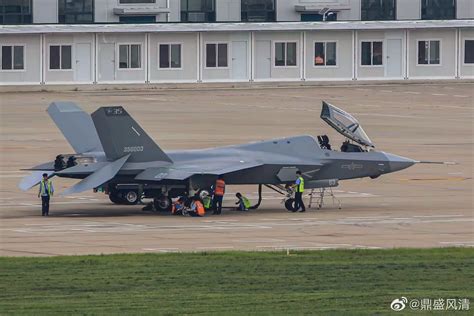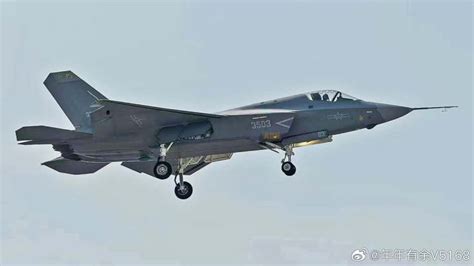
Mount Etna, Europe’s largest and most active volcano, has erupted again, sending plumes of ash and lava high into the Sicilian sky, creating a stunning, fiery display. The eruption, which began recently, has captivated observers with its intensity, transforming the volcano into a spectacular lava fountain.
Mount Etna Erupts, Showers Sicily with Ash and Fiery Lava
Mount Etna, the towering Sicilian volcano and one of Europe’s most active, has once again roared to life, spewing ash and molten lava in a dramatic eruption visible for miles. The recent eruption, characterized by heightened Strombolian activity, transformed the peak into a breathtaking lava fountain, showering the surrounding areas with volcanic ash and prompting aviation warnings.
The eruption’s intensity has drawn significant attention, with dramatic images and videos circulating online, showcasing the raw power of the volcano. According to initial reports, the eruption began with a notable increase in activity at one of Etna’s summit craters. This intensified quickly, escalating into a vigorous display of lava flows and ash plumes that reached considerable heights, painting the sky with fiery hues.
While Etna is almost constantly active, this latest eruption is considered more significant due to the volume of material ejected and the visual spectacle it created. The plume of ash has drifted over nearby towns, prompting residents to take precautions. Local authorities are monitoring the situation closely to assess any potential risks to populated areas.
“Etna is a very active volcano, and eruptions like this, while impressive, are not uncommon,” explained volcanologist Dr. Isabella Rossi, from the National Institute of Geophysics and Volcanology (INGV) in Catania. “We are closely monitoring the activity to understand its evolution and any potential impact.”
The current eruption is classified as a Strombolian eruption, which is characterized by moderate bursts of expanding gases that eject clots of incandescent lava. These eruptions are typically less violent than Plinian eruptions, which involve sustained explosive columns of ash and gas. However, even Strombolian eruptions can pose hazards, particularly from falling ash and lava flows.
The impact of the ash cloud is a primary concern. Volcanic ash, composed of fine particles of rock and glass, can be hazardous to human health, causing respiratory problems and eye irritation. It can also disrupt air travel by damaging aircraft engines. In addition, the weight of ash accumulation can cause roofs to collapse, and it can contaminate water supplies.
Local airports have been put on alert, and aviation authorities are closely monitoring the ash plume to determine whether flight diversions are necessary. Catania Airport, the main international airport serving eastern Sicily, has experienced temporary closures in the past due to Etna’s eruptions.
The eruption has also drawn tourists and photographers eager to witness the natural spectacle. However, authorities are urging caution, warning people to stay away from the immediate vicinity of the volcano and to follow safety guidelines to avoid potential hazards.
Etna’s frequent eruptions are a result of its complex geological setting. The volcano is located near the convergent boundary between the African and Eurasian tectonic plates. As the African plate subducts beneath the Eurasian plate, it melts, producing magma that rises to the surface, fueling Etna’s volcanic activity.
The volcano’s history is marked by a long series of eruptions, some of which have been highly destructive. In 1669, a major eruption destroyed several villages and reached the city of Catania. More recently, eruptions in 1928 and 1971 caused significant damage. Despite the risks, the fertile volcanic soils around Etna support agriculture, and the volcano is a popular tourist destination.
Scientists continue to study Etna closely to better understand its behavior and to improve forecasting of future eruptions. The INGV operates a network of monitoring stations around the volcano, collecting data on ground deformation, gas emissions, and seismic activity. This data is used to assess the volcano’s state of activity and to provide early warnings of potential eruptions.
The current eruption serves as a reminder of the dynamic forces that shape our planet and the need for continued monitoring and preparedness in volcanic regions. While the fiery spectacle of Etna’s eruption is captivating, it also underscores the potential hazards associated with living near an active volcano. The local population and authorities are maintaining vigilance, prepared to respond to any further escalation in activity.
The eruption’s impact on local communities is being closely monitored. While immediate danger to populated areas is currently limited, the accumulation of ash is causing concern, and authorities are advising residents to take precautions such as wearing masks and cleaning ash from roofs and streets.
The eruption also highlights the ongoing challenges of managing volcanic risk. While scientists have made significant progress in understanding volcanic processes, predicting eruptions remains a complex and uncertain science. Continued research and monitoring are essential to improving our ability to anticipate and mitigate the impacts of volcanic activity.
“We are learning more about Etna’s behavior with each eruption,” said Dr. Rossi. “But there is still much that we don’t understand. Continued monitoring and research are crucial to improving our understanding of this dynamic volcano and protecting the communities that live in its shadow.”
Detailed Analysis of the Eruption
The recent eruption of Mount Etna can be examined through several key lenses: its geological context, the nature of the eruption itself, its immediate impacts, and the broader implications for risk management and scientific understanding.
Geological Context:
Mount Etna’s location at the convergent boundary of the African and Eurasian plates is fundamental to understanding its volcanic activity. The subduction process leads to the formation of magma at depth, which then rises through the Earth’s crust to erupt at the surface. Etna is characterized by a complex plumbing system, with multiple magma chambers and conduits that influence the style and frequency of eruptions. The volcano’s structure is also highly dynamic, with frequent collapses and landslides that can trigger eruptions or modify their course.
Etna’s volcanic history spans hundreds of thousands of years, with evidence of both explosive and effusive eruptions. The volcano has grown through the accumulation of lava flows, ash deposits, and volcanic debris, forming a complex stratovolcano. The surrounding landscape bears the imprint of past eruptions, with lava fields, volcanic cones, and calderas providing evidence of Etna’s long and active history.
Nature of the Eruption:
The recent eruption is characterized as a Strombolian eruption, which is a relatively mild type of volcanic eruption. Strombolian eruptions involve the ejection of incandescent lava fragments, known as bombs and lapilli, along with ash and gas. These eruptions are typically intermittent, with bursts of activity separated by periods of relative quiet. The lava fragments are often ejected to heights of several hundred meters, creating a spectacular display.
The intensity of Strombolian eruptions can vary, and the recent eruption of Etna is considered to be on the higher end of the scale. The eruption has produced a significant volume of ash, which has drifted over nearby towns. The lava fountain, a sustained jet of molten lava, is another notable feature of the eruption. Lava fountains are typically associated with high gas pressures within the magma, which propel the lava upward.
The eruption is being monitored closely by scientists from the INGV. They are using a variety of techniques to track the eruption’s progress, including ground-based observations, satellite imagery, and seismic monitoring. The data collected is used to assess the eruption’s intensity, to forecast its future course, and to provide warnings to local authorities.
Immediate Impacts:
The immediate impacts of the eruption include ashfall, lava flows, and potential disruptions to air travel. Ashfall is a widespread phenomenon during Etna’s eruptions, and the recent eruption has blanketed several towns with a layer of fine ash. Ashfall can cause respiratory problems, eye irritation, and damage to infrastructure. It can also disrupt agricultural activities and contaminate water supplies.
Lava flows pose a more localized threat. While the recent eruption has not produced large lava flows, even small flows can be destructive, burying roads, buildings, and agricultural land. The direction of lava flows is influenced by the topography of the volcano, and scientists are monitoring the flows closely to assess their potential impact.
Disruptions to air travel are a common consequence of Etna’s eruptions. Volcanic ash can damage aircraft engines, and airlines typically avoid flying through ash clouds. Catania Airport, the main international airport serving eastern Sicily, has been closed temporarily during past eruptions, and the recent eruption has prompted aviation authorities to issue warnings to airlines.
Broader Implications:
The eruption of Mount Etna highlights the broader challenges of managing volcanic risk. Volcanic eruptions are natural hazards that can pose significant threats to human life and property. Managing volcanic risk requires a combination of scientific understanding, monitoring, preparedness, and mitigation measures.
Scientists have made significant progress in understanding volcanic processes, but predicting eruptions remains a complex and uncertain science. Continued research and monitoring are essential to improving our ability to anticipate and mitigate the impacts of volcanic activity.
Preparedness is also crucial. Communities living near active volcanoes need to be aware of the risks and to have plans in place to respond to eruptions. This includes evacuation plans, emergency shelters, and public education programs.
Mitigation measures can help to reduce the impacts of volcanic eruptions. These measures include building codes that require roofs to be able to withstand the weight of ash, and infrastructure improvements to protect water supplies and transportation networks.
The eruption of Mount Etna also underscores the importance of international collaboration in volcanic risk management. Volcanic eruptions can have transboundary impacts, and international cooperation is essential to sharing information, coordinating responses, and providing assistance to affected countries.
Community Response and Preparedness
The communities surrounding Mount Etna have developed a robust response system to manage the risks associated with the volcano’s frequent eruptions. This system involves a coordinated effort between local authorities, scientific institutions, and the residents themselves.
Local Authorities:
Local authorities play a key role in managing volcanic risk. They are responsible for developing and implementing emergency plans, coordinating evacuations, and providing assistance to affected communities. They also work closely with scientific institutions to monitor the volcano’s activity and to assess potential hazards.
The local authorities have established a network of emergency shelters and evacuation routes. They also conduct regular drills to prepare residents for potential eruptions. In addition, they provide public education programs to raise awareness of volcanic hazards and to promote preparedness.
Scientific Institutions:
Scientific institutions, such as the INGV, play a critical role in monitoring Mount Etna’s activity and providing scientific advice to local authorities. They operate a network of monitoring stations around the volcano, collecting data on ground deformation, gas emissions, and seismic activity. This data is used to assess the volcano’s state of activity and to provide early warnings of potential eruptions.
The INGV also conducts research on volcanic processes to improve our understanding of Etna’s behavior and to develop better forecasting techniques. They work closely with local authorities to communicate scientific information and to provide expert advice on risk management.
Residents:
The residents of the communities surrounding Mount Etna are an integral part of the response system. They are aware of the risks associated with living near an active volcano and are prepared to take action when necessary.
Many residents have participated in emergency preparedness programs and know the evacuation routes and emergency shelter locations. They also have supplies on hand to cope with ashfall and other potential hazards.
The residents also play a role in monitoring the volcano’s activity. They report any unusual observations, such as changes in gas emissions or ground deformation, to local authorities. This information can be valuable in assessing the volcano’s state of activity and in providing early warnings of potential eruptions.
The coordinated effort between local authorities, scientific institutions, and the residents themselves has been effective in managing the risks associated with Mount Etna’s frequent eruptions. While eruptions can still cause disruptions and damage, the response system has helped to minimize the impacts and to protect the communities that live in the shadow of the volcano.
Economic and Environmental Considerations
The frequent eruptions of Mount Etna have both economic and environmental implications for the surrounding region. While the eruptions can cause damage and disruption, they also contribute to the area’s unique natural environment and support certain economic activities.
Economic Impacts:
The economic impacts of Etna’s eruptions are complex and varied. On the one hand, eruptions can cause damage to infrastructure, agricultural land, and tourism facilities. Ashfall can disrupt transportation and commerce, and lava flows can destroy property.
On the other hand, Etna’s volcanic activity also supports certain economic activities. The fertile volcanic soils around the volcano are ideal for agriculture, and the region is known for its production of wine, citrus fruits, and other crops. The volcano is also a popular tourist destination, attracting visitors from around the world who come to see its dramatic landscapes and witness its eruptions.
The economic impact of a particular eruption depends on its intensity, duration, and location. Small eruptions may have minimal economic consequences, while large eruptions can cause significant damage and disruption. The economic impacts are also influenced by the preparedness of local communities and the effectiveness of risk management measures.
Environmental Impacts:
The environmental impacts of Etna’s eruptions are also complex and varied. Eruptions can release large quantities of gases and particles into the atmosphere, which can affect air quality and climate. Ashfall can contaminate water supplies and damage vegetation. Lava flows can alter landscapes and destroy habitats.
However, Etna’s volcanic activity also contributes to the area’s unique natural environment. The volcano has created a diverse range of habitats, from lava fields and volcanic deserts to forests and meadows. The volcanic soils are rich in nutrients, supporting a variety of plant and animal life.
The environmental impacts of a particular eruption depend on its intensity, duration, and location. Small eruptions may have minimal environmental consequences, while large eruptions can cause significant damage and disruption. The environmental impacts are also influenced by the management of natural resources and the conservation efforts in the region.
Balancing the economic and environmental considerations is a key challenge for the communities surrounding Mount Etna. Sustainable development strategies are needed to minimize the negative impacts of volcanic activity while maximizing the benefits that the volcano provides. This requires a coordinated effort between local authorities, scientific institutions, and the residents themselves.
Long-Term Monitoring and Research Efforts
The ongoing monitoring and research efforts at Mount Etna are crucial for understanding the volcano’s behavior and for improving the ability to forecast future eruptions. These efforts involve a variety of techniques and disciplines, including geology, geophysics, geochemistry, and remote sensing.
Geological Studies:
Geological studies are essential for understanding the long-term history of Mount Etna and for identifying patterns in its volcanic activity. These studies involve mapping the volcano’s structure, analyzing the composition of its rocks and lavas, and dating past eruptions.
Geologists also study the processes that drive volcanic activity, such as magma generation, storage, and transport. This research helps to improve our understanding of how eruptions occur and how they can be forecast.
Geophysical Monitoring:
Geophysical monitoring involves measuring various physical parameters of the volcano, such as ground deformation, seismic activity, and gravity changes. These measurements provide insights into the internal processes of the volcano and can help to detect changes that may indicate an impending eruption.
Ground deformation is measured using a variety of techniques, including GPS, satellite radar interferometry (InSAR), and tiltmeters. Seismic activity is monitored using a network of seismometers that record ground vibrations. Gravity changes are measured using gravimeters, which are sensitive instruments that detect variations in the Earth’s gravitational field.
Geochemical Analysis:
Geochemical analysis involves studying the composition of volcanic gases and fluids. These gases and fluids are released from the magma beneath the volcano and can provide valuable information about its state of activity.
Geochemists measure the concentrations of various gases, such as sulfur dioxide, carbon dioxide, and hydrogen sulfide. They also analyze the isotopic composition of the gases and fluids. This information can help to identify changes in the magma system that may indicate an impending eruption.
Remote Sensing:
Remote sensing involves using satellite and airborne instruments to monitor the volcano from a distance. These instruments can measure a variety of parameters, such as surface temperature, gas emissions, and ground deformation.
Remote sensing data can be used to create maps of the volcano’s surface, to track the movement of lava flows, and to detect changes in gas emissions. This information can be used to assess the eruption’s intensity and to forecast its future course.
The data collected from these various monitoring and research efforts are integrated to provide a comprehensive picture of Mount Etna’s behavior. This information is used to assess the volcano’s state of activity, to forecast future eruptions, and to provide warnings to local authorities. The ongoing monitoring and research efforts are essential for protecting the communities that live in the shadow of the volcano.
Future Research Directions
Despite the significant progress that has been made in understanding Mount Etna, there are still many unanswered questions about its behavior. Future research efforts will focus on addressing these questions and on improving our ability to forecast future eruptions. Some of the key areas of future research include:
Improving Magma System Models:
Developing more sophisticated models of Etna’s magma system is a key priority. These models need to incorporate data from a variety of sources, including geological studies, geophysical monitoring, and geochemical analysis. The models should be able to simulate the processes that drive volcanic activity, such as magma generation, storage, and transport.
Understanding Eruption Triggers:
Identifying the triggers that initiate eruptions is another important research goal. Eruptions can be triggered by a variety of factors, such as changes in magma pressure, external stresses, and interactions with groundwater. Understanding these triggers will help to improve our ability to forecast eruptions.
Developing Better Forecasting Techniques:
Developing more accurate and reliable forecasting techniques is a major challenge. Current forecasting techniques rely on statistical analysis of past eruptions and on monitoring changes in the volcano’s activity. However, these techniques are not always accurate, and there is a need for new and improved methods.
Assessing Volcanic Hazards:
Assessing the potential hazards associated with future eruptions is essential for developing effective risk management strategies. This involves mapping the areas that are most vulnerable to ashfall, lava flows, and other volcanic hazards. It also involves assessing the potential impacts of eruptions on infrastructure, agriculture, and tourism.
Communicating Risk Effectively:
Communicating the risks associated with volcanic activity to the public is crucial for promoting preparedness and reducing the impacts of eruptions. This requires developing effective communication strategies that are tailored to the needs of different audiences. It also involves building trust between scientists, local authorities, and the public.
Addressing these research challenges will require a collaborative effort between scientists from different disciplines and from different countries. It will also require the development of new technologies and the implementation of long-term monitoring programs. The ultimate goal is to improve our understanding of Mount Etna and to protect the communities that live in its shadow.
Frequently Asked Questions (FAQ)
1. Is this eruption of Mount Etna dangerous to nearby residents?
While Mount Etna’s eruptions can cause ashfall and potential air travel disruptions, the current eruption doesn’t pose an immediate threat to populated areas. Authorities are monitoring the situation closely, and residents are advised to take precautions against ash accumulation, such as wearing masks and cleaning surfaces.
2. Will Catania Airport be closed due to the eruption?
Aviation authorities are continuously monitoring the ash plume from Mount Etna. Depending on the plume’s direction and density, Catania Airport may experience temporary closures or flight diversions. Travelers are advised to check with their airlines for the latest updates.
3. What type of eruption is Mount Etna currently experiencing?
The current eruption is classified as a Strombolian eruption, characterized by moderate bursts of gas and lava fragments. This type of eruption is less violent than Plinian eruptions but can still produce ashfall and lava flows.
4. Why does Mount Etna erupt so frequently?
Mount Etna’s frequent eruptions are due to its location on the convergent boundary between the African and Eurasian tectonic plates. The subduction of the African plate beneath the Eurasian plate leads to magma formation, fueling the volcano’s activity.
5. What is the National Institute of Geophysics and Volcanology (INGV) doing to monitor the eruption?
The INGV operates a network of monitoring stations around Mount Etna, collecting data on ground deformation, gas emissions, and seismic activity. This data is used to assess the volcano’s state of activity, forecast potential eruptions, and provide early warnings to local authorities.









